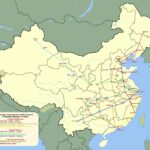A memorable movie of Miklos Jancso, The horse Army of 1967, opened my soul to Hungarian legendary courage and cavalry traditions. Moved from those emotions I always paid attentions to Hungary, discovering along my life how much we Italians have in common with that history and culture. A small people of asiatic origin isolated in that vaste plain fighting from the beginning for surviving with a peculiar language and culture, in an open territory surrounded by slavish people, invaded by Mongols and then by Ottoman empire, accepted as a partner by Habsburg emperor in governing all Central Europe, grounding European values. Working in Naples I discovered the common roots of Angioine French family monarchy, governing in Sicily and in Budapest for all the XIV° century, commonality very clear in architecture, religion, until administration systems and bureaucracy. Hungary was at those times a Great Hungary covering the present Croatia (Rijeka was its port), Rumania, Slovakia, for more then 320000 sqkm,( today 93000). It was the bulwark toward Turks, Russian tribes, Mongols, protecting all Christian Europe.
Ottoman empire tried to open its way to Europe across Hungary plain to Vienna, after its occupation of Balkans, but Hungarians never disappeared, moving their capital to Bratislava (Pozsony) and occupying the present Slovakia (High Hungary). Pride and independence, language and traditions, created the basic characteristic of this people: the dignity. The same dignity that convinced the aristocratic Habsburg dominating from Vienna to acknowledge a parity system for the empire, becoming Austro-Hungarian empire for two centuries in the core of Europe, never including in the government Chechs or Italians, the other nationalities within its borders. Due to the same spirit of pride and loyalty, the spirit of the cavalry, Hungary choices in the subsequent two World War, always with losers side, reduced the Great Country to a small one now, always geopolitically at the center of Europe. The same spirit in 1956 started the rebellion against Soviet Union and in 1989 opened the borders to German people escaping from Democratic Republic of Germany and giving the last push to the Berlin wall.
After the dissolving of Soviet Union, Hungarian had always the aim to rebuild their own identity, before to dissolve again in EU bureucratic structure created in Brussels and from this basis, like in other Central European nations, an attempt to defend their civilisation from waves of immigrants, and to protect also the other ten millions Hungarian remained out of the country, has been pursued, creating some conflicts with the most old UE members. Big springs to the future have been done in the front of technology, with intellectual resources of the young people and the leverage on the big and deep roots we tried to describe. Schools and Universities in and out of the present borders where Hungarian live are excellent and integration with traditional Austrian partners and Germany which benefited of Hungary policy for its reunification, reinforced the dignity and respect to this small nation but with big ambitions and culture. Culture so well represented in the vaste literature, of which a modern giant has been Sandor Marai, so well analysing the pillars of Hungarian society from the end of ‘800 to ‘900 turbulent changes. A deep transformation always aligned with those big roots has modernised the country life and not only in Budapest , but also in Pec with its beautiful renovation of outstanding cathedral, in the famous Balaton lake areas and in the main infrastructure , positioning well the country also in tourist context, not only in industrial and services improvements. Poland never disappeared but also Hungary had a relentless and resilient history, promise of a nice future. But Europe must change and understand this pride and leverage on it for a common success in the world.


